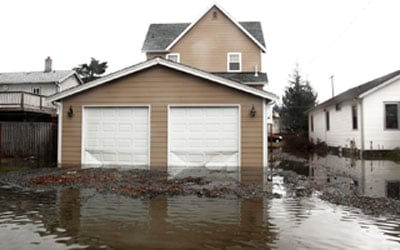
It can be quite unfortunate to have water damage ransacking your property. Most of the time, people undergoing a flood for the first time tend to face stress, fear, and panic, not knowing what to do during such an emergency.
It’s crucial to always contact a professional water restoration company the moment water damage occurs to avoid facing more destruction and to keep your family safe. While you wait for help to arrive, you should also do your part to secure your property and save as much of your belongings as you can.
When you take the matter into your own hands and learn to act during a flood, you can significantly minimize the water damage and improve your chances of saving your property. Keep reading below to learn how to keep you and your family safe during a flood.
Find Out How the Flood Started
In the event of a flood, it’s crucial to determine where the water is coming from and how it’s invading your home. Before anything else, it’s best to monitor your bathroom, kitchen, and basement for any possible signs of leaking or piping failure that may be causing the water buildup.
Finding the source of the water can be valuable information not only for the water damage company but also for you, as it can motivate you to do something about your situation. While help is on the way, you can figure out what you need to do next.
Document the Situation
When you go through water damage, and you need repairs, it’s possible to file a claim with your insurance company—but it will depend on why the flood started. Even though you’re still unsure, it’s best to take out your camera or phone and start recording pictures and videos of the scene.
Having more than enough proof that you clearly need water damage repairs can increase your chances of getting your claims approved because your evidence shows the damage from all angles. Other than that, the water damage company you call will also take pictures and send them over to your insurance agent as part of the claims.
Try to Stop the Flow of Water
When you locate the source of the water damage, such as in the form of a malfunctioning pipe, you can prevent the situation from getting worse by trying to close the line to prevent more water from coming in.
However, if the water is flowing through your home’s foundation, it’s best to contact water damage restoration services right away. They will make sure to come with the proper equipment and tools, allowing them to stop the water from causing more damage to your home and helping you clean up your place.
Turn Off Your Electrical System
After taking care of the origin of the water damage, your job isn’t over yet. You will have to ensure you and your family are safe by unplugging power cables, electronics, and appliances and transferring them to a more elevated and dry part of your home.
If you want to save as much of your belongings as possible, you should learn to act right away and remove them from lower ground. If you notice the water level slowly rising past your electrical outlets, it’s best to shut down the power in that area too.
Conclusion
When you witness a flood going through your household, you should know what to do to help lessen the severity of the situation. Besides calling for a water restoration company, you should locate the source of the problem, document the case, try to stop the water flow, and turn off your electrical system immediately.
Are you looking for water damage restoration services in California to help restore your property back to its pristine condition? Restoration Masters Expert is a full-service restoration company that helps residential and commercial establishments with water damage restoration, clean up, and reconstruction. Get in touch with us today to receive immediate help!





